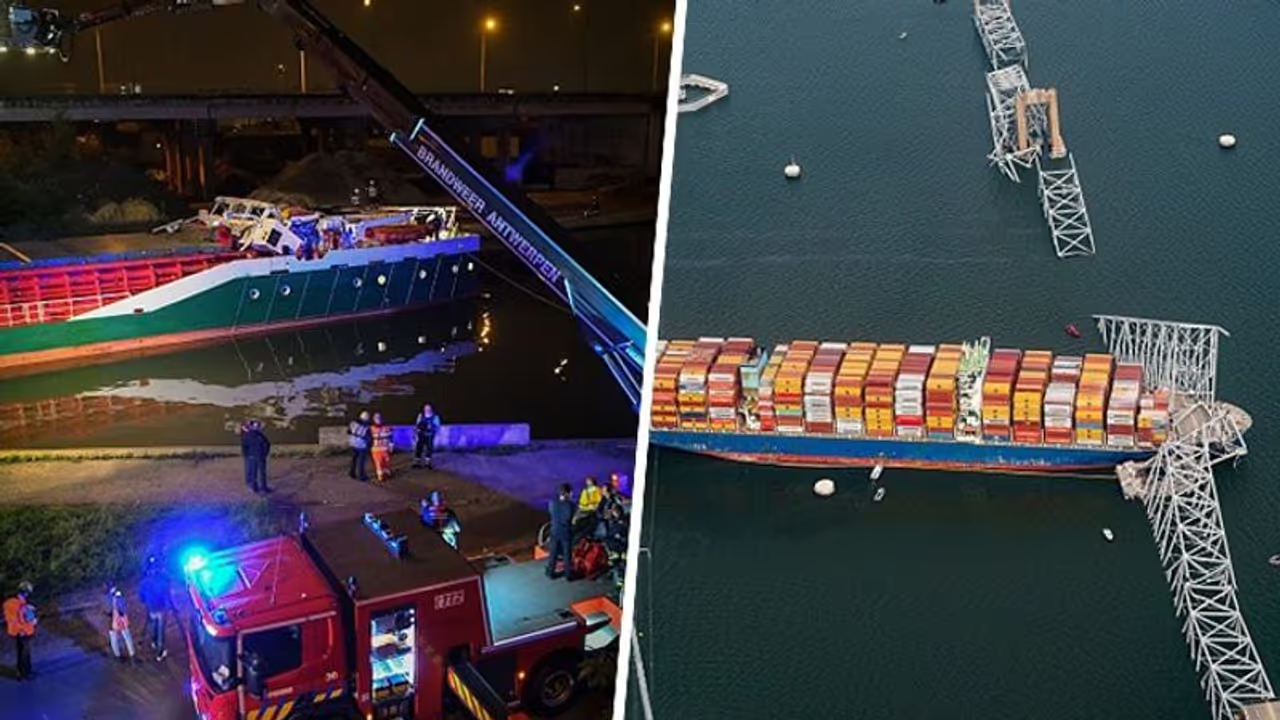The tragic collision of the container ship MS Dali with Baltimore's Francis Scott Key Bridge highlights its troubling history of prior incidents, including a 2016 collision in Antwerp, Belgium, raising concerns about maintenance and operational standards.
The container ship that tragically collided with Baltimore's Francis Scott Key Bridge, leading to its collapse and subsequent mass-casualty event, has been revealed to have a troubling history, including a prior incident in 2016 at the port of Antwerp, Belgium.

The vessel in question, the MS Dali, operated by Synergy Marine Corp and owned by Grace Ocean Pte Ltd, made headlines when it lost power and crashed into the Francis Scott Key Bridge in Baltimore during the early hours of Tuesday morning. The collision resulted in a catastrophic bridge collapse, sending vehicles plunging into the Patapsco River and causing significant damage.
What has come to light is that the MS Dali had encountered troubles before. In July 2016, while attempting to depart from the North Sea container terminal in Antwerp, Belgium, the ship collided with a quay, causing hull damage that raised concerns about its seaworthiness. An inspection revealed structural problems that required an extended period of repairs before the vessel could resume operations.
The incident in Antwerp is not an isolated one. Records from the Electronic Quality Shipping Information System (Equasis) indicate that the MS Dali has been flagged for deficiencies on multiple occasions since its construction in 2015. In Chile in June 2023, a deficiency related to propulsion and auxiliary machinery was noted. Moreover, the vessel was cited last year for a propulsion deficiency, raising questions about the reliability of its machinery.
The circumstances surrounding the recent collision in Baltimore echo those of the 2016 incident in Antwerp. Reports indicate that the MS Dali lost power as it was leaving port, prompting crew members to issue a mayday call. Videos captured moments before the collision show flickering lights on the ship, suggesting electrical issues may have contributed to the loss of propulsion.
While the exact cause of the power loss remains under investigation, officials have ruled out terrorism as a factor. However, concerns over the vessel's maintenance and operational standards have been raised, given its history of deficiencies and prior collision.
The aftermath of the Baltimore bridge collapse has been devastating, with several individuals still unaccounted for and others rescued from the river with varying degrees of injury. The incident has prompted renewed scrutiny of maritime safety protocols and the regulation of vessel operations, particularly concerning vessels with known maintenance issues.
Efforts to address the situation are underway, with the Maritime and Port Authority of Singapore collaborating with the US Coast Guard in the investigation. Meanwhile, questions linger about the accountability of the ship's operators and the broader implications for maritime safety.
As authorities continue to piece together the events leading up to the collision, the connection to the 2016 Antwerp incident underscores the importance of thorough vessel inspections, stringent maintenance standards, and effective regulatory oversight in preventing such tragedies in the future.
